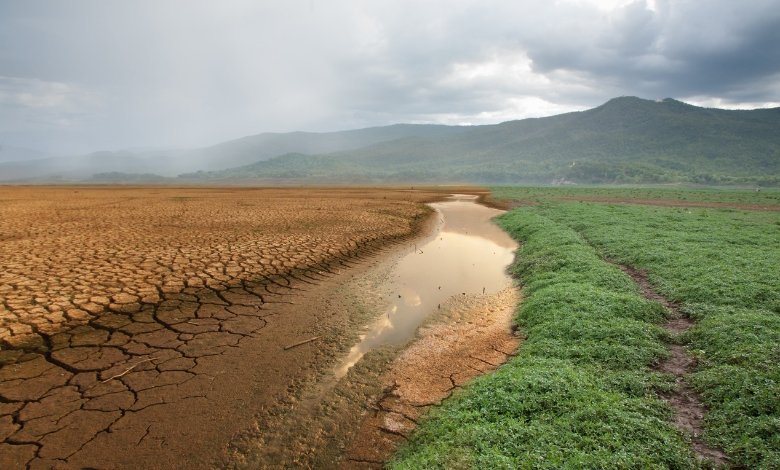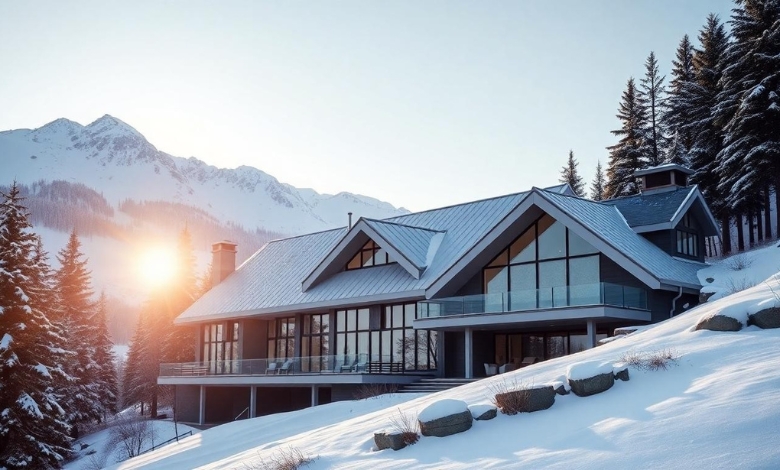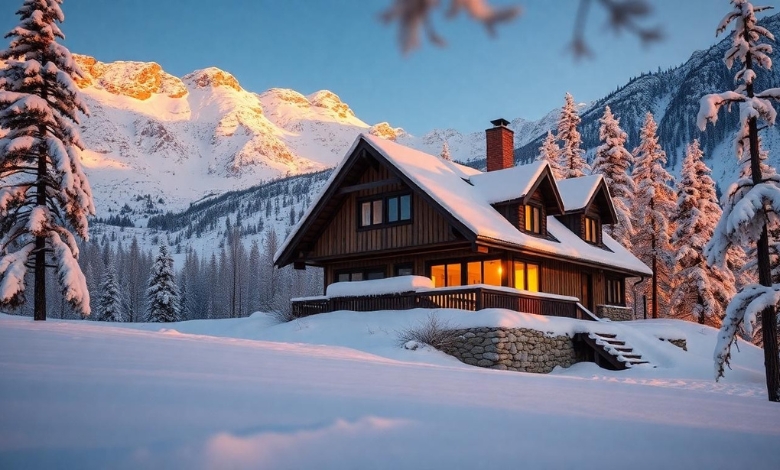Discover what type of roof is cutting edge in alpine regions to keep your home warm and safe in harsh, frosty conditions.
Living in the mountains comes with so many perks—like incredible views, fresh air, and a peace that really calms you down.
But honestly, if you want to keep your home warm and safe, regular roofing just won’t do the trick.
If you’re looking for sustainable solutions that can handle the cold mountain weather without any issues, you’ve landed in the right place.
Here’s everything you should know about the top roofing options that are perfect for tough mountain weather.
Let’s get started.
Article Breakdown
Overview of Alpine Climate Challenges

Before we jump in, let’s be clear: the weather in mountain areas can really be something!
Just picture a winter storm that brings in so much snow you can barely keep up with it, winds that challenge the strength of your house, and temperatures that are downright freezing.
Growing up in the mountains, I remember my parents always being anxious about our roof, listening for any creaks from the snow piling up.
This isn’t just a personal story; it’s something that homeowners, builders, and designers have to keep in mind when they’re picking out roofing materials.
Let’s take a closer look at the specific challenges:
- Heavy Snow Loads: Roofs have to hold up under a lot of snow without collapsing.
- Temperature Fluctuations: The constant freezing and thawing can cause issues like cracks and leaks.
- High Winds: Strong winds really test how well your roof is attached.
- Ice Dams: A real pain for homeowners every winter; if the insulation isn’t right, you can end up with ice build-up.
Top Roofing Types for Alpine Regions
So, what options do you have if you’re determined not to spend another winter worrying about your roof?
Here’s where technology and innovation step in.
These advanced roofing types are designed not just to survive but to thrive in tough alpine climates.
1. High-Performance Metal Roofs
Metal roofs are no longer just for industrial buildings or rustic cabins.
Modern metal roofing has seen a huge surge in residential use, and for good reason.
Picture a sleek, metal surface that sheds snow like a pro, sparing you the backbreaking task of rooftop shoveling.
Benefits of Metal Roofs:
- Durability: These roofs can last 40-70 years, outliving traditional asphalt shingles several times over.
- Shedding Ability: Snow slides right off, minimizing build-up and reducing stress on the structure.
- Energy Efficiency: Metal reflects sunlight, keeping homes warmer in winter and cooler in summer.
Cons:
- Noise: Yes, it can be noisier when it rains or hails, but you can mitigate this with high-quality underlayment.
- Cost: Upfront costs are higher, but the long-term savings in maintenance and energy can make it worthwhile.
Pro Tip:
My uncle switched to a standing seam metal roof after years of battling ice dams, and he swears it was the best investment he ever made.
He even enjoys watching snow slide off in giant slabs—it’s oddly satisfying.
2. Composite Roof Shingles with Advanced Insulation
If metal isn’t quite your style, composite roof shingles might just be the middle ground you’re looking for.
These aren’t your grandma’s shingles; we’re talking about cutting-edge, high-performance materials.
Benefits of Composite Shingles:
- Lightweight but Strong: Made from a mix of materials like fiberglass, they’re tough without adding significant weight.
- Advanced Insulation: Many modern composite shingles come with built-in insulation, keeping your home warmer and reducing those dreaded ice dams.
- Aesthetic Appeal: They come in various designs and can mimic the look of slate, wood, or traditional shingles without the high maintenance.
Cons:
- Price Variability: Premium composites can get pricey, especially when opting for models with enhanced thermal performance.
- Installation Complexity: Specialized installation might be required to achieve optimal insulation benefits.
Think of composite shingles as the hybrid car of the roofing world.
They combine elements of traditional materials with modern innovations, resulting in something more efficient and effective.
3. Green Roofs with Enhanced Snow Resistance
Ah, the charm of a green roof!
Imagine looking out your window to see a layer of vegetation instead of asphalt or metal.
Green roofs have long been a favorite in urban sustainability projects, but with the right design, they’re making their way into alpine homes, too.
Benefits of Green Roofs:
- Insulation Supreme: The vegetation layer acts as natural insulation, retaining warmth in winter and providing cool shade in summer.
- Eco-Friendly: They improve air quality, support local biodiversity, and help manage stormwater.
- Aesthetic and Property Value: Who wouldn’t want a home that’s both unique and eco-friendly?
Cons:
- Structural Requirements: Your home must be engineered to support the extra weight, especially when wet.
- Maintenance: Regular upkeep is essential to keep the vegetation healthy and functional.
When I visited a friend who lives in a high-altitude chalet with a green roof, I was surprised at how cozy their home felt despite the bitter cold outside.
They even mentioned that it slashed their heating bills dramatically.
Applications and Examples
It’s one thing to read about these options and another to see them in action.
So, let’s look at a few examples where these roofs have made a real difference.
The Alpine Lodge with a Metal Roof

In a small town nestled in the French Alps, a boutique lodge installed a high-performance standing seam metal roof after their traditional one failed under heavy snowfall.
Not only did it eliminate ice dam issues, but guests also complimented the unique, modern look.
Composite Shingles for a Private Home

A homeowner in the Rockies opted for composite shingles with integrated thermal insulation.
After installation, they reported not just a warmer interior but a significant drop in their heating costs.
The versatile look also fit right into the rustic mountain landscape.
Sustainable Green Roof on a Mountain Cabin

An architect-designed mountain cabin in Switzerland took sustainability to the next level with a green roof.
Equipped with a specialized drainage system, the roof supported native plants that thrived year-round.
The added insulation kept the cabin cozy and reduced the impact of extreme temperature changes.
Expert Tips for Choosing the Right Roofing Solution
Feeling overwhelmed by choices?
Here are some tips to help you make the best decision for your alpine home:
- Assess Your Home’s Structure: If your home can’t handle the weight of a green roof, it’s off the table—no matter how cool it looks.
- Consider Long-Term Costs: A cheaper roof may save you money today, but a cutting-edge option like metal or composite might save thousands over the years.
- Factor in Local Regulations: Alpine areas sometimes have specific codes related to snow load and wind resistance, so double-check what’s required.
- Work with a Trusted Contractor: Installation can make or break your new roof. Find a professional experienced with your chosen roofing type.
Maintenance Matters: Keeping Your Roof in Top Shape
Even the best roof won’t last without proper care.
Here’s how to make sure your investment pays off:
- Regular Inspections: Check for loose panels, shingles, or any signs of wear after major storms.
- Clear Snow Accumulations: While metal roofs are great at shedding snow, composite and green roofs might need an assist if snow gets too deep.
- Keep Gutters Clear: Blocked gutters can lead to ice dams, even with the most sophisticated roofing.
Key Takings
- Choosing the right roof is more than a construction decision—it’s a commitment to protecting your home and the people in it.
- Don’t settle for the bare minimum when cutting-edge solutions offer so much more.
- Whether you’re drawn to the practicality of metal, the hybrid efficiency of composite shingles, or the sustainability of a green roof, there’s an option out there that’s perfect for your alpine retreat.
Additional Resources:
- Metal Roofing Alliance: You can explore the Metal Roofing Alliance to learn more about the benefits and options of metal roofing.
- Green Roofs for Healthy Cities: For resources and case studies on green roofs in alpine environments, check out Green Roofs for Healthy Cities, which features award-winning projects and insights into green roofing benefits.
Note: Just a heads up, this is only the first step! Be sure to do your homework and reach out to professionals before making any roofing choices. Every house, financial situation, and personal requirement is different, so take the time to figure out what’s best for you.



